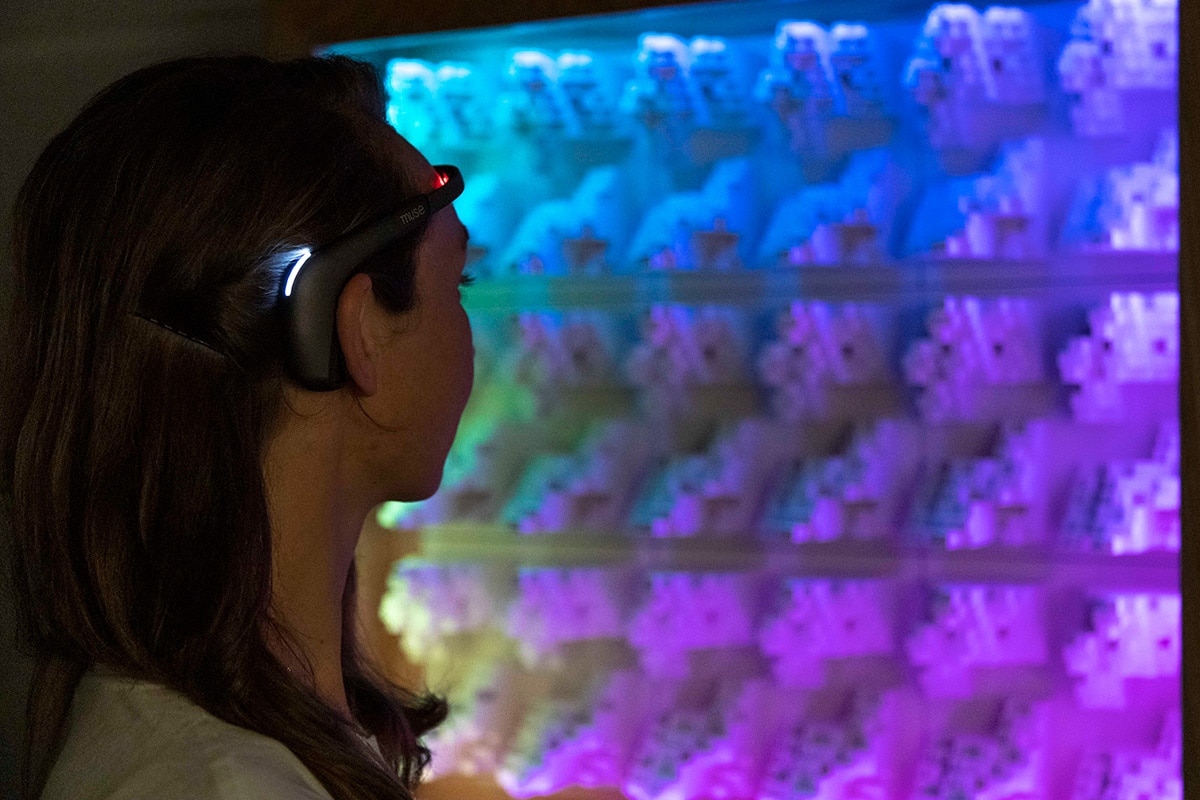The sculpture was based on fractal patterns found in nature that are known to have a calming effect. The piece incorporates sound responsive, interactive lighting and a specially designed app-based control system.
To accompany the sculpture a unique piece of soothing music was composed in order to optimise the relaxation effect.
A research study was carried out to prove the therapeutic benefits of the sound responsive light sculpture, Essence.
How Essence was created
How the study was conducted
The study involved thirty-three participants individually experiencing the Essence sculpture in a controlled environment. Utilising EEG (electroencephalogram) equipment, brainwave activity data was collected to test the hypothesis that exposure to the sculpture induces relaxation.
What was discovered
The results of the study showed that experiencing the Essence sculpture, for as little as ten minutes, does in fact aid relaxation, which in turn contributes positively to wellbeing. As well as this, it was found that the sculpture helped to release tension and increase the concentration of the observer, thereby improving mental agility.
Sound responsive light sculpture
The electronics in Essence were designed so that sound is converted to coloured light with a scientifically meaningful correlation. This results in a synchronised audio-visual display that catalyses a deeper level of mesmeric focus in the observer, bringing them into the present moment, thereby helping to alleviate tension.
Both sound and light are energy vibrations that occur at varying frequencies. The sculpture detects sound via an integrated precision microphone and then converts the predominant frequency into an equally proportionate frequency of coloured light. The lowest frequencies (bass notes) are displayed as red because red has the lowest frequency of coloured light. As the frequency of the sensed sound increases (and the notes get higher), the colour of the displayed light progresses through the colour spectrum accordingly, going up to violet and magenta at the highest end of the frequency range.
To learn more about the study, Click Here.


